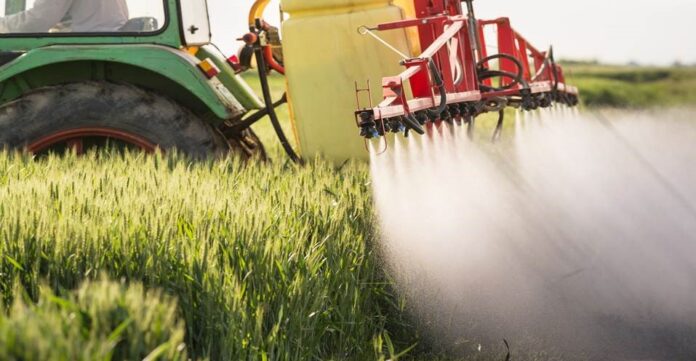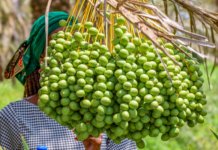The global agricultural sprayers market is projected to grow at a compound annual growth rate (CAGR) of 6.1%, reaching US$ 4.4 billion by the conclusion of 2031 from an estimated value of US$ 2.9 billion in 2024. This market segment is integral to the agricultural machinery industry, encompassing a wide array of equipment designed to apply pesticides, fertilizers, and other agricultural chemicals. These agricultural sprayers market are crucial in modern agriculture for efficiently distributing agrochemicals across crops, thereby optimizing pest control, managing nutrients, and ensuring crop health.
Adopting advanced sprayer technologies is increasingly important to maximize crop yields and sustain agricultural productivity, all while minimizing environmental impact. With the global population rising steadily and arable land becoming scarcer, the role of agricultural sprayers becomes even more significant in meeting food production demands sustainably.
The agricultural sprayers market includes various types of equipment such as backpack sprayers, knapsack sprayers, tractor-mounted sprayers, self-propelled sprayers, and aerial drones equipped with spraying capabilities. These sprayers come in diverse sizes, capacities, and application methods, catering to the specific needs of farmers across different crop types and farm sizes.
Persistence Market Research emphasizes the importance of these technologies in supporting modern farming practices and highlights their role in enhancing agricultural efficiency and sustainability. As technological innovations continue to advance, the agricultural sprayers market is poised for substantial growth, driven by increasing demand for higher crop yields and more efficient resource utilization in agriculture globally.
Drivers of Growth:
- Technological Advancements: Continuous innovations in sprayer technology, including precision spraying, automated systems, and integration with IoT (Internet of Things), are enhancing efficiency, accuracy, and cost-effectiveness in agricultural operations.
- Increasing Demand for Food Production: With a growing global population, there is escalating pressure to increase agricultural output. Agricultural sprayers play a critical role in maximizing crop yields by effectively applying fertilizers and pesticides.
- Efforts towards Sustainable Agriculture: There is a rising emphasis on sustainable agricultural practices to minimize environmental impact. Advanced sprayers facilitate precise application of agrochemicals, reducing overuse and environmental contamination.
- Expansion of Commercial Farming: Commercial farms and large-scale operations are increasingly adopting mechanized solutions like tractor-mounted and self-propelled sprayers to optimize labor efficiency and productivity.
- Government Support and Subsidies: Many governments provide subsidies and incentives to farmers for adopting modern agricultural equipment, including sprayers, which accelerates market growth.
Regional Insights:
- North America: Known for its advanced agriculture sector, North America is a prominent market for agricultural sprayers. The region sees high adoption of precision farming techniques, including advanced sprayer technologies like GPS-guided systems and automated application methods. Government support for sustainable agriculture practices further fuels market growth.
- Europe: Europe also boasts a mature agricultural sprayers market. Stringent regulations regarding pesticide application and environmental protection drive the adoption of precision sprayers and integrated pest management solutions. There is a growing trend towards robotic and drone-based sprayers to enhance efficiency and reduce chemical usage.
- Asia Pacific: Asia Pacific is witnessing rapid growth in the agricultural sprayers market, driven by increasing mechanization in agriculture and the need to enhance crop productivity. Countries like China and India are significant contributors due to their large agricultural sectors. There is a shift towards mechanized farming practices, including the adoption of tractor-mounted and self-propelled sprayers.
Challenges and Restraints:
- Environmental Concerns: There is increasing scrutiny and regulations on the use of agrochemicals to minimize environmental impact. Sprayers must comply with stringent regulations regarding chemical application, which can increase costs and limit certain types of chemicals.
- High Initial Investment: The upfront cost of advanced sprayer technologies, such as GPS-guided systems and robotic sprayers, can be prohibitive for small and medium-sized farmers. This limits adoption, particularly in developing regions where financial constraints are prevalent.
- Operational Complexity: Advanced sprayer technologies often require specialized skills for operation and maintenance. Farmers may face challenges in training and retaining skilled personnel capable of using these technologies effectively.
- Compatibility and Adaptability: Sprayers need to be compatible with a wide range of crops and farming conditions. Ensuring adaptability across different crop types, terrains, and weather conditions can be challenging, affecting operational efficiency.
- Access to Support and Infrastructure: In some regions, particularly remote or rural areas, access to adequate support services, spare parts, and infrastructure for maintaining sprayers may be limited. This can lead to downtime and increased operational costs.
Future Outlook:
- Technological Advancements: Continued innovation in sprayer technologies, such as precision spraying, autonomous operation, and integration with data analytics (IoT), will enhance efficiency, accuracy, and sustainability in agricultural practices. Manufacturers are focusing on developing smart sprayers that can adapt to variable field conditions and optimize chemical application.
- Shift towards Sustainable Agriculture: There is a growing emphasis on sustainable agriculture practices globally. Advanced sprayers that enable precise application of agrochemicals, thereby reducing environmental impact and minimizing chemical residues, are expected to see increased demand. Governments and regulatory bodies are likely to support these initiatives through incentives and regulations promoting sustainable farming practices.
- Increasing Adoption of Precision Farming: Precision farming techniques, including the use of GPS-guided sprayers and drones for aerial spraying, are becoming more widespread. These technologies help farmers optimize inputs, reduce costs, and maximize yields by applying chemicals precisely where needed.
The agricultural sprayers market presents a dynamic landscape shaped by technological innovation, sustainability imperatives, and evolving agricultural practices worldwide. As global population growth continues to drive demand for increased food production, agricultural sprayers play a crucial role in enhancing crop yields, managing pests and diseases, and optimizing resource use.
Key trends such as the adoption of precision farming technologies, advancements in sprayer automation and connectivity, and the shift towards sustainable agricultural practices are defining the future trajectory of the market. These trends not only improve operational efficiencies and cost-effectiveness but also address environmental concerns by reducing chemical usage and minimizing impact on ecosystems.








